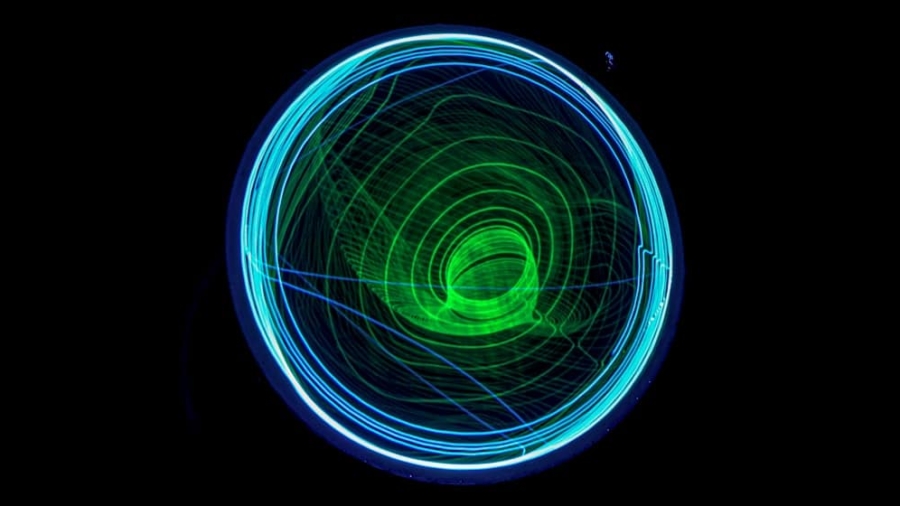The Internet of Things (IoT) has revolutionized the way we interact with our environment, particularly in urban settings where air quality has become a pressing concern. IoT sensors are devices that collect and transmit data over the internet, enabling real-time monitoring and analysis of various environmental parameters. In the context of air quality, these sensors can detect pollutants such as particulate matter (PM), nitrogen dioxide (NO2), sulfur dioxide (SO2), and ozone (O3), providing critical insights into the health of urban atmospheres.
As cities continue to grow and industrial activities expand, the need for effective air quality monitoring becomes increasingly vital, not only for public health but also for regulatory compliance and environmental sustainability. Air quality monitoring through IoT sensors offers a proactive approach to managing pollution levels. Traditional methods of air quality assessment often rely on stationary monitoring stations that provide limited data points and can be expensive to maintain.
In contrast, IoT sensors can be deployed in a distributed manner across urban landscapes, creating a dense network of data collection points. This allows for a more comprehensive understanding of air quality variations across different neighborhoods and times of day. By harnessing the power of IoT technology, cities can respond more effectively to pollution events, implement targeted interventions, and engage citizens in environmental stewardship.
Key Takeaways
- IoT sensors play a crucial role in monitoring air quality in smart cities by providing real-time data on pollution levels.
- Different types of IoT sensors, such as particulate matter sensors and gas sensors, are used to monitor air quality and detect pollutants.
- Using IoT sensors for air quality monitoring offers benefits such as improved accuracy, cost-effectiveness, and the ability to track pollution sources.
- Challenges and limitations of IoT sensors in air quality monitoring include data accuracy, sensor calibration, and maintenance issues.
- Successful case studies demonstrate the effectiveness of IoT sensors in improving air quality in smart cities, leading to better public health outcomes.
The Role of IoT Sensors in Smart City Infrastructure
In the framework of smart city infrastructure, IoT sensors play a pivotal role in enhancing urban living conditions. Smart cities leverage technology to improve the quality of life for residents, optimize resource management, and promote sustainability. Air quality monitoring is a fundamental component of this vision, as it directly impacts public health and environmental quality.
By integrating IoT sensors into the urban fabric, cities can create a responsive ecosystem that adapts to real-time data inputs. The deployment of IoT sensors within smart city infrastructure facilitates a multi-faceted approach to urban management. For instance, data collected from air quality sensors can be integrated with traffic management systems to identify correlations between vehicular emissions and pollution spikes.
This information can inform traffic regulation strategies, such as optimizing traffic flow or implementing congestion charges during high pollution periods. Furthermore, the data can be shared with citizens through mobile applications or public displays, fostering community awareness and encouraging behavioral changes that contribute to improved air quality.
Types of IoT Sensors Used for Air Quality Monitoring

A variety of IoT sensors are employed for air quality monitoring, each designed to measure specific pollutants or environmental conditions. One common type is the electrochemical sensor, which is widely used for detecting gases like carbon monoxide (CO), nitrogen dioxide (NO2), and ozone (O3). These sensors operate by measuring the current produced during a chemical reaction between the target gas and an electrode, providing real-time data on gas concentrations.
Their relatively low cost and compact size make them suitable for widespread deployment in urban areas. Another important category of sensors is optical particulate matter sensors, which utilize light scattering techniques to measure the concentration of airborne particles. These sensors can detect various sizes of particulate matter, including PM2.5 and PM10, which are critical indicators of air quality due to their potential health impacts.
By employing laser or LED light sources, these sensors can provide accurate readings of particulate concentrations in real time. Additionally, some advanced sensors combine multiple detection methods to offer a more comprehensive analysis of air quality by measuring both gases and particulate matter simultaneously.
Benefits of Using IoT Sensors for Air Quality Monitoring
The implementation of IoT sensors for air quality monitoring presents numerous benefits that extend beyond mere data collection. One significant advantage is the ability to gather high-resolution data over time and space. Traditional monitoring stations often provide data at fixed locations, which may not accurately represent air quality variations across different areas of a city.
In contrast, IoT sensors can be deployed in diverse locations, capturing localized pollution patterns and enabling more precise assessments of air quality. Moreover, the real-time nature of IoT sensor data allows for immediate responses to pollution events. For example, if an IoT sensor detects a sudden spike in particulate matter due to construction activities or traffic congestion, city officials can quickly implement measures such as traffic rerouting or temporary construction halts to mitigate exposure risks.
This proactive approach not only protects public health but also enhances community trust in local governance by demonstrating responsiveness to environmental concerns.
Challenges and Limitations of IoT Sensors in Air Quality Monitoring
Despite their advantages, the deployment of IoT sensors for air quality monitoring is not without challenges. One major limitation is the variability in sensor accuracy and reliability. While many low-cost sensors are available on the market, they may not always meet the stringent accuracy standards required for regulatory compliance or scientific research.
Calibration issues can arise, leading to discrepancies in data reporting that may misinform policy decisions or public perceptions about air quality. Another challenge lies in data management and integration. The sheer volume of data generated by a network of IoT sensors can be overwhelming, necessitating robust data processing and analysis capabilities.
Cities must invest in infrastructure that can handle large datasets while ensuring data security and privacy. Additionally, integrating sensor data with existing urban management systems requires careful planning and collaboration among various stakeholders, including government agencies, technology providers, and community organizations.
Case Studies of Successful Implementation of IoT Sensors for Air Quality Monitoring in Smart Cities

Several cities around the world have successfully implemented IoT sensors for air quality monitoring, showcasing innovative approaches to urban environmental management. In Barcelona, Spain, a network of low-cost air quality sensors has been deployed throughout the city as part of its Smart City initiative. These sensors provide real-time data on pollution levels, which is made accessible to residents through a mobile app.
The city has used this information to implement targeted interventions, such as increasing green spaces in areas with high pollution levels and promoting public transportation options. Similarly, Singapore has embraced IoT technology to enhance its air quality monitoring efforts. The National Environment Agency (NEA) has established a comprehensive network of air quality sensors that monitor pollutants across various locations in the city-state.
The data collected is integrated into a centralized platform that informs both policymakers and the public about current air quality conditions. This initiative has enabled Singapore to respond swiftly to pollution events and engage citizens in discussions about air quality improvement strategies.
Future Developments and Innovations in IoT Sensors for Air Quality Monitoring
The future of IoT sensors for air quality monitoring is poised for significant advancements driven by technological innovations and growing environmental awareness. One promising area is the development of more sophisticated sensor technologies that enhance accuracy while reducing costs. Emerging materials such as graphene are being explored for their potential use in gas sensing applications due to their high sensitivity and rapid response times.
These advancements could lead to more reliable low-cost sensors that can be deployed widely without compromising data integrity. Additionally, artificial intelligence (AI) and machine learning algorithms are expected to play a crucial role in analyzing the vast amounts of data generated by IoT sensors. By employing predictive analytics, cities can anticipate pollution events based on historical data patterns and current conditions.
This capability will enable more proactive urban planning and resource allocation strategies aimed at improving air quality over time.
The Impact of IoT Sensors on Improving Air Quality in Smart Cities
The integration of IoT sensors into urban environments represents a transformative approach to air quality monitoring that holds immense potential for improving public health and environmental sustainability. By providing real-time data on pollution levels and enabling responsive interventions, these sensors empower cities to tackle air quality challenges more effectively than ever before. As technology continues to evolve, the future promises even greater innovations that will enhance our ability to monitor and manage air quality in smart cities around the globe.
In the context of smart cities, the integration of IoT sensors for monitoring air quality is crucial for creating healthier urban environments. For those interested in exploring how technology can enhance urban living, a related article on the best software for social media content can provide insights into how cities can effectively communicate air quality data to the public. You can read more about it in this comprehensive guide.
FAQs
What are IoT sensors?
IoT sensors are devices that can collect and transmit data from the physical environment to the internet or other connected devices. These sensors can measure various parameters such as temperature, humidity, air quality, and more.
How do IoT sensors monitor air quality in smart cities?
IoT sensors for air quality monitoring are deployed throughout smart cities to measure pollutants such as particulate matter, nitrogen dioxide, ozone, and carbon monoxide. These sensors collect real-time data and transmit it to a central system for analysis and action.
What are the benefits of using IoT sensors for air quality monitoring?
Using IoT sensors for air quality monitoring in smart cities allows for real-time data collection, which can lead to more informed decision-making and timely interventions to improve air quality. It also enables the identification of pollution hotspots and the evaluation of the effectiveness of air quality improvement initiatives.
How do IoT sensors contribute to the overall goal of creating smart cities?
IoT sensors play a crucial role in creating smart cities by providing valuable data for urban planning, environmental management, and public health initiatives. By monitoring air quality, these sensors contribute to the creation of healthier and more sustainable urban environments.
What are some challenges associated with using IoT sensors for air quality monitoring in smart cities?
Challenges related to using IoT sensors for air quality monitoring in smart cities include ensuring the accuracy and reliability of the sensor data, addressing issues of sensor calibration and maintenance, and managing the large volume of data generated by the sensors. Additionally, ensuring data privacy and security is also a concern.

